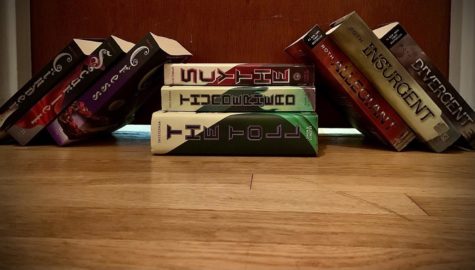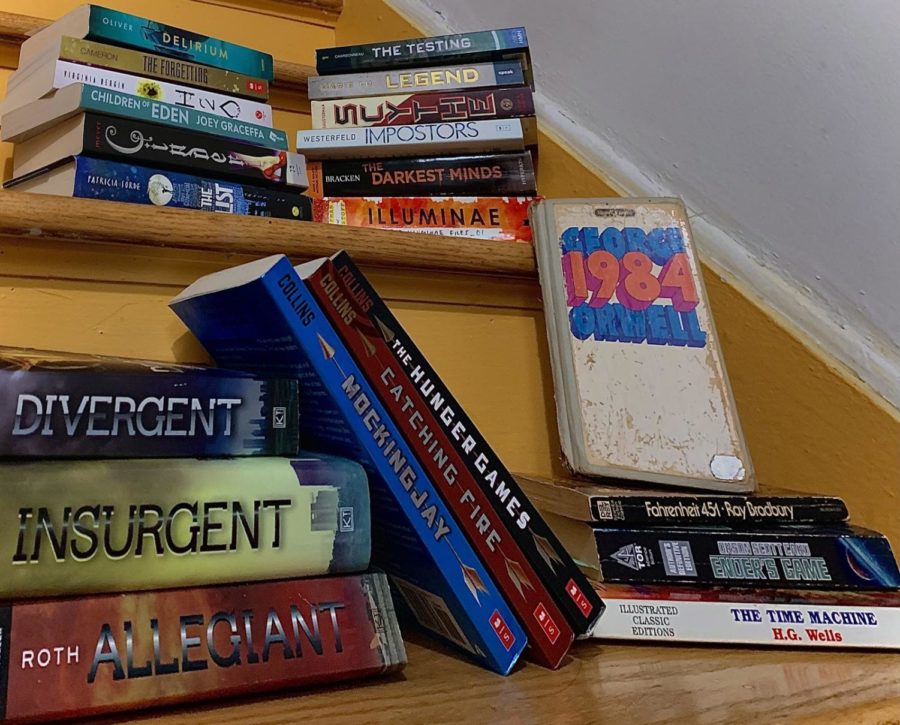The Evolution of the Dystopian Novel
As these novels reveal, there are infinite ways in which things can go wrong.
Although all of these books are categorized as dystopian, each novel puts a different spin upon the concept.
The beauty of fiction lies in its relationship with real life. Although fictional stories often depart from fact, what an author writes will always be influenced by her real-world experiences and beliefs. Knowing this, it is easy to see why dystopian literature experienced its first spike in popularity during the Great Depression, and why the genre has developed as it has over the last century.
The concept of dystopia first emerged as the antithesis of Sir Thomas More’s idea of utopia — a world devoid of conflict. If a utopia is a world of peace and harmony, a dystopia is the exact opposite. Though much time has passed since the terms were invented, their definitions remain relatively unchanged. Today, the Oxford English Dictionary defines a dystopia as “An imaginary place or condition in which everything is as bad as possible.”
Dystopian novels stem from this basic idea; as noted by Chloe Wong ’24, “In dystopian fiction, the worst that can happen has happened.” While the concept itself has not changed much over the years, writers’ approaches to dystopian literature have.
In contrast to modern-day dystopian novels, which are usually aimed at young adult audiences and feature teenage protagonists, early dystopian literature was geared towards adults who had grown cynical of utopian ideals in light of political unrest and growing anxiety about the future. Stories such as Jack London’s The Iron Heel — a 1908 novel about a worker uprising and revolution — were written in response to rising tensions between political groups as World War I drew near. Likewise, the 1921 novel We by Yevgeny Zamyatin reflected a collective fear of totalitarian governments after the rise of fascism during the first world war.
After the genre-defining works of the early 1900s to the 1920s, authors continued to use dystopian fiction to express global anxieties and fears. Two famous examples of dystopian fiction that emerged after the 1920s include Aldous Huxley’s Brave New World and George Orwell’s 1984, published in 1939 and 1949 respectively.
The popularity of these particular stories has endured because they focus on fears of totalitarianism and loss of individuality — two issues that remain relevant today. Both novels have even been widely credited with prophesying aspects of the future. Brave New World takes place in a society where the truth is difficult to parse from within a vast sea of irrelevant information. 1984 features technology used to monitor and influence the opinions and actions of people. Sound familiar?
Later novels in the 1950s and 60s would also attempt to predict the future. Many novels published within this time period — including Philip K. Dick’s Do Androids Dream of Electric Sheep? and Slaughterhouse-Five by Kurt Vonnegut — focused on technologically-advanced dystopias in response to major technological developments such as the creation of the first artificial Earth satellite and the first personal computer.
Between the 1970s and the 1990s, the genre began to widen its horizons, and writers started to grasp the full potential of dystopian fiction. After decades of dystopian novels primarily focusing on war and totalitarian governments, authors began branching out to tackle environmental and social issues, thus creating more variety within the genre. Among this new wave of dystopian literature was Lois Lowry’s The Giver, which was one of the first dystopian novels written for a younger audience.
Though The Giver was published in 1994, dystopian novels remained primarily aimed at adults until Suzanne Collins’s The Hunger Games emerged in 2008 as one of the most popular young adult books of the decade, with the book remaining on the New York Times bestseller list for more than five consecutive years. “The Hunger Games was my favorite dystopian book, because the life and death stakes were thrilling to read about, and the love triangle drew me in when I was younger,” Wong said.
After the explosive success of The Hunger Games series, the dystopian genre changed forever. What followed was an influx of young-adult-targeted dystopian novels in the 2010s, including Veronica Roth’s Divergent series, Marissa Meyer’s The Lunar Chronicles series, and Neal Shusterman’s Arc of A Scythe trilogy. These new dystopian books differed from previous ones in that they often included themes of self-discovery and romance — a direct result of the genre’s shift in audience, since these elements make it easier for young readers to see themselves in the characters. In addition, these novels played into young readers’ desire for adventure and mystery by developing fictional worlds that resembled, but were not tethered to, our reality.

“I think they were popular because they involved interesting concepts like survival games that we don’t really have in life currently, but that could still be possible,” Sydney Lee ’23 said. Therein lies the allure of the modern dystopian novel — it balances fantastical imaginations with real, relevant issues facing society. As a result, these works of fiction have the potential to leave lasting impacts upon our world.
“Dystopian books have been used to raise awareness and discussions about certain issues; for example, politicians often bring up 1984 when talking about privacy and government,” said Mollie Ehrenberg ’23. With their ability to comment on and reflect on societal problems through an entertaining story, dystopian novels will always have a place on people’s shelves. So long as the world contains conflict, authors and readers alike will turn to dystopias as a way to engage with issues from the comfort of their own homes.
“I think they were popular because they involved interesting concepts like survival games that we don’t really have in life currently but that could still be possible,” Sydney Lee ’23 said. Therein lies the allure of the modern dystopian novel — it balances fantastical imaginations with real, relevant issues facing society. As a result, these works of fiction have the potential to leave lasting impacts upon our world.
Katrina Tablang is a Copy Chief for 'The Science Survey.' She enjoys journalistic writing because it enables her to explore a wide variety of perspectives...











